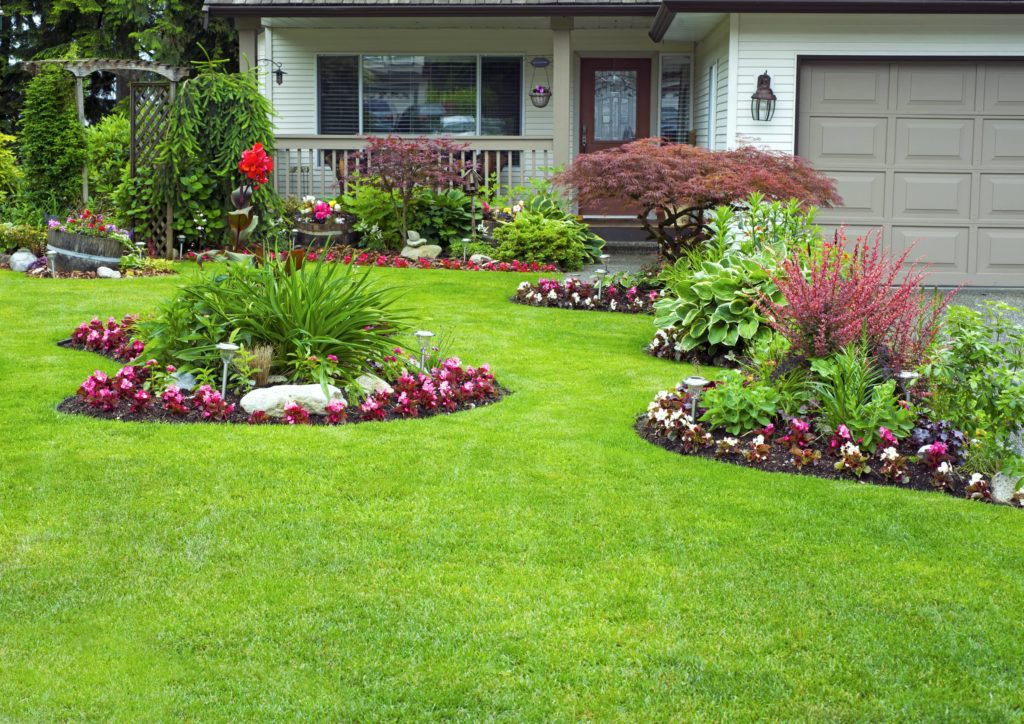A well-maintained yard is more than just an aesthetic feature—it plays a crucial role in protecting your home, particularly its foundation. Poor drainage can lead to water pooling around your property, creating conditions that can compromise the structural integrity of your foundation. This blog explores how proper yard drainage safeguards your home’s foundation and provides practical insights for addressing drainage issues.
The Connection Between Drainage and Foundation Health
Water is one of the most significant threats to the stability of a home’s foundation. While the foundation is designed to support the structure and resist external forces, excessive water around the base of your home can weaken its integrity over time.
When water doesn’t drain away effectively, it can:
- Cause Soil Erosion: Water runoff can erode soil near the foundation, leading to uneven support for your home.
- Increase Hydrostatic Pressure: Water pooling around the foundation creates hydrostatic pressure, which can push against walls and cause cracks.
- Encourage Expansive Soil Movement: In areas with clay-rich soil, water absorption causes soil to expand. When it dries, the soil contracts, creating a cycle of movement that stresses the foundation.
Proper yard drainage prevents these issues by directing water away from the foundation, keeping it stable and secure.
Common Signs of Poor Yard Drainage
Identifying drainage problems early can save you from costly repairs down the road. Here are some common signs that indicate poor yard drainage:
- Persistent Puddles: Water pooling in the yard long after a rainfall.
- Soggy Soil: Soil that remains wet and spongy, especially near the foundation.
- Cracks in Walls or Floors: Visible cracks in interior or exterior walls, particularly near the foundation.
- Uneven Lawn: Dips or low spots in the yard where water collects.
- Basement Moisture: Damp or musty-smelling basements caused by water infiltration.
If you notice any of these issues, it’s essential to address the drainage problem promptly.
How Proper Drainage Systems Work
Proper drainage systems are designed to move water away from your property efficiently. Here are the most common types of yard drainage systems and how they protect your foundation:
- French Drains
- A French drain consists of a trench filled with gravel and a perforated pipe that collects and redirects water away from the foundation. These drains are highly effective at preventing water pooling and reducing hydrostatic pressure near your home.
- A French drain consists of a trench filled with gravel and a perforated pipe that collects and redirects water away from the foundation. These drains are highly effective at preventing water pooling and reducing hydrostatic pressure near your home.
- Channel Drains
- Channel drains are surface-level systems designed to collect water from driveways, patios, or other hardscaped areas and channel it to a safe location. These drains help prevent water from accumulating near the foundation and causing erosion.
- Channel drains are surface-level systems designed to collect water from driveways, patios, or other hardscaped areas and channel it to a safe location. These drains help prevent water from accumulating near the foundation and causing erosion.
- Sump Pumps
- Sump pumps are installed in basements or low-lying areas to pump out excess water. These devices are essential for homes in areas prone to flooding or with high water tables.
- Sump pumps are installed in basements or low-lying areas to pump out excess water. These devices are essential for homes in areas prone to flooding or with high water tables.
- Yard Grading
- Proper grading ensures the ground slopes away from your home, directing water toward designated drainage areas. A slope of at least 6 inches over a 10-foot span is recommended to keep water away from the foundation.
- Proper grading ensures the ground slopes away from your home, directing water toward designated drainage areas. A slope of at least 6 inches over a 10-foot span is recommended to keep water away from the foundation.
- Gutter and Downspout Systems
- Gutters and downspouts play a critical role in yard drainage. By collecting and redirecting rainwater from your roof, they prevent water from saturating the soil near the foundation.
- Gutters and downspouts play a critical role in yard drainage. By collecting and redirecting rainwater from your roof, they prevent water from saturating the soil near the foundation.
Benefits of Proper Yard Drainage for Foundation Protection
Investing in effective yard drainage offers several benefits that go beyond foundation protection:
- Prevents Structural Damage
- By keeping water away from the foundation, drainage systems minimize the risk of cracks, leaks, and other structural issues.
- By keeping water away from the foundation, drainage systems minimize the risk of cracks, leaks, and other structural issues.
- Reduces Soil Movement
- Proper drainage stabilizes the soil around your home, preventing movement that can weaken the foundation over time.
- Proper drainage stabilizes the soil around your home, preventing movement that can weaken the foundation over time.
- Prevents Mold and Mildew
- Excess moisture around the foundation can lead to mold growth, both outside and inside your home. Proper drainage reduces moisture levels, improving indoor air quality.
- Excess moisture around the foundation can lead to mold growth, both outside and inside your home. Proper drainage reduces moisture levels, improving indoor air quality.
- Protects Landscaping
- Effective drainage prevents soil erosion and pooling, preserving the health of your lawn and garden.
- Effective drainage prevents soil erosion and pooling, preserving the health of your lawn and garden.
- Saves Money
- Addressing drainage issues proactively can save you from expensive foundation repairs, waterproofing, and other remedial measures.
- Addressing drainage issues proactively can save you from expensive foundation repairs, waterproofing, and other remedial measures.
Steps to Improve Yard Drainage
Improving your yard’s drainage doesn’t always require a full-scale overhaul. Here are some practical steps you can take:
- Inspect Gutters and Downspouts
- Ensure gutters are clear of debris and downspouts extend at least 5 feet away from your foundation.
- Ensure gutters are clear of debris and downspouts extend at least 5 feet away from your foundation.
- Grade Your Lawn
- Adjust the slope of your yard to encourage water flow away from the house. This may require adding soil or regrading low spots.
- Adjust the slope of your yard to encourage water flow away from the house. This may require adding soil or regrading low spots.
- Install Drainage Systems
- Depending on the severity of the problem, you may need to install French drains, channel drains, or sump pumps.
- Depending on the severity of the problem, you may need to install French drains, channel drains, or sump pumps.
- Aerate the Lawn
- Aerating the soil improves water absorption and reduces pooling by allowing water to penetrate more evenly.
- Aerating the soil improves water absorption and reduces pooling by allowing water to penetrate more evenly.
- Use Native Plants
- Native plants have deep root systems that improve soil stability and water absorption, reducing runoff.
- Native plants have deep root systems that improve soil stability and water absorption, reducing runoff.
- Add a Dry Well
- A dry well collects excess water and allows it to seep into the ground safely, away from the foundation.
- A dry well collects excess water and allows it to seep into the ground safely, away from the foundation.
Consequences of Ignoring Drainage Issues
Failing to address drainage problems can lead to long-term damage to your property. The consequences include:
- Foundation Cracks and Settling: Persistent water exposure weakens the foundation, causing cracks and uneven settling.
- Basement Flooding: Poor drainage increases the risk of water infiltrating basements, leading to water damage and mold growth.
- Pest Infestations: Standing water attracts pests like mosquitoes and termites, creating additional problems for your home.
- Higher Repair Costs: The longer drainage issues are ignored, the more expensive it becomes to repair the damage.
Key Takeaways for Protecting Your Foundation
- Proper yard drainage is essential for keeping water away from your home’s foundation.
- Common drainage solutions include French drains, sump pumps, and proper lawn grading.
- Addressing drainage issues early can save you from costly foundation repairs and maintain the structural integrity of your home.
- Simple maintenance tasks like clearing gutters and planting native vegetation can go a long way in preventing water damage.
Ensuring your yard has a functional drainage system is one of the best investments you can make in your property. With the right solutions in place, you can protect your foundation, enhance the health of your landscape, and enjoy peace of mind knowing your home is safe from water damage.

